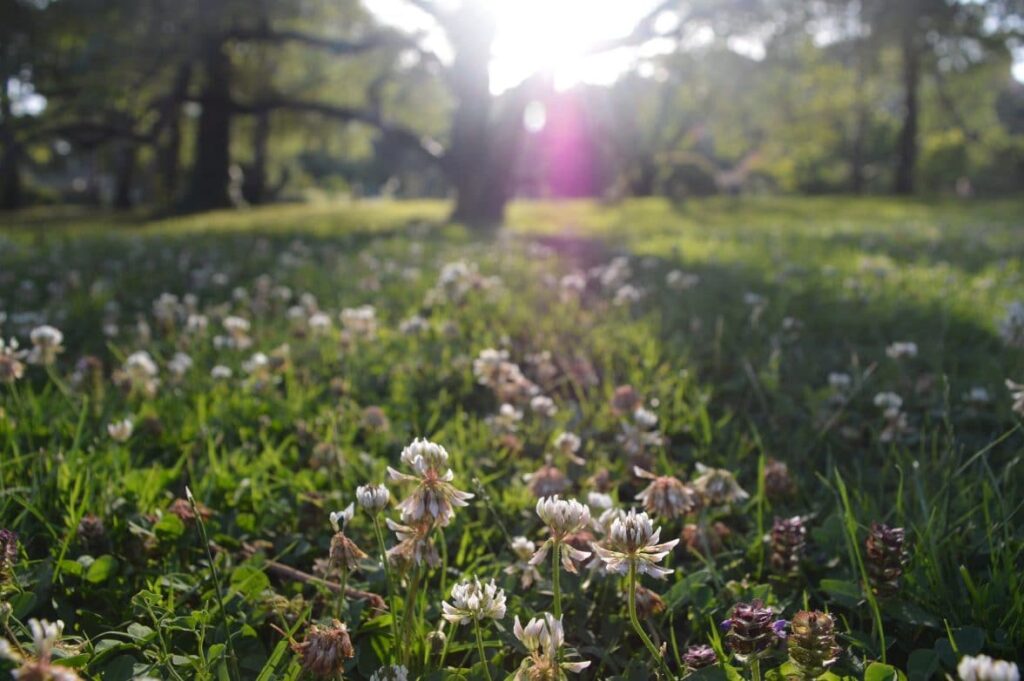Protein is crucial in meat and milk production – boosting content of protein in feed will inevitable increase your production.
Legumes, such as clover and alfalfa, are becoming more common and this kind of protein production is still gaining speed. These farm-grown legumes saves expensive transport cost, and they will yield both on protein and mineral supply and contribute with valuable soil-nitrogen for the following crops.
For several years, soybean has been an important source of protein and commodity in the agricultural business, but as plant breeding is gaining momentum and techniques are getting more effective, soybean faces powerful competitors in clovers and alfalfa.
Clovers and alfalfa can be adapted and cultivated in almost every part of the world and will in many farming systems give a continuous protein-supply. The easiest way to improve forage protein content is therefore to sow grass mixtures including clover or alfalfa. Growing protein locally increases farm self-sufficiency and improves independency upon fluctuating market prices for protein substitutes.
White clover and red clover
The choice for either white clover (Trifolium repens) or red clover (Trifolium pratense) will depend on the growing conditions. Each of them has special characteristics and mix well with several types of grasses. They are both highly digestible and productive and they will guarantee a grass sward with high protein content for several years. White clover has a good persistence and is the natural choice in mixtures for grazing due to its small leaves, its ability to spread laterally and its tolerance to close grazing. Red clover is well suited in grass mixtures for cutting and silage due to its aggressive and upright growth. Under dry conditions, red clover performs extremely well due to it’s proliferate root system.
Alfalfa
Like clover, alfalfa (Medicago sativa) is a valuable forage crop, which enables farmers to become self-sufficient in protein. It is reliable and efficient and, year by year, it is getting even better. We believe that many farmers could spike their economy by using more of the newest high-value varieties and therefore we promote all new releases under the motto: DLF Alfalfa – start growing your return today.
Most alfalfa varieties contain 18-20% protein making it easier to become self-sufficient in protein. With a balanced mixture of alfalfa and grass, you will inevitably grow an optimal energy-to-protein ratio and gain a more profitable feed plan for your livestock. Like red clover, alfalfa has a comprehensive root system stabilizing the yield even in periods of drought. A mixture of alfalfa and grass could yield up to four times more feed than you would get from grass alone. The superb quality of alfalfa’s plant fibres makes it highly digestible for cows and horses. Finally, alfalfa makes good silage and is easy to store for longer periods as a high-quality protein feed.
Find more information about alfalfa and clovers on the Variety App
The importance of clover and alfalfa as futures protein source is just one of the main breeding goals for breeders at DLF. Breeders are working continually to improve yield, protein content, disease-tolerance, persistency and digestibility – and to develop varieties for all types of soil and climate. The result is a comprehensive range of high-performance varieties that repay the investment in establishment many times over.
With the new DLF Seed Variety App, [https://www.dlf.com/about-dlf/newsletters/prograss/2017_11_seed-variety-app_launch.aspx ) customers and farmers has a new tool to identify and compare varieties based on characteristics, listings, etc. thereby enable them to identify the best-suited varieties for specific purposes and locations.







